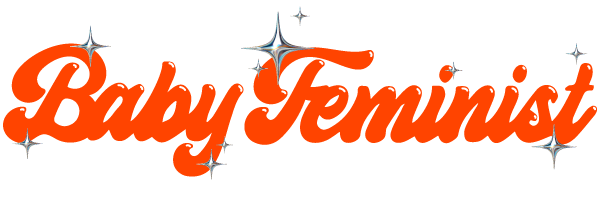White Feminism Isn’t Just Wrong — It’s Also Dangerous
Historically, there have been a lot of reasons to critique the mainstream feminist movement. At times, it has explicitly excluded Black women, women of colour, Indigenous women, and women who belong to the LGBTQIA+ community, as well as women from lower socioeconomic brackets and other marginalised communities.
In recent years, ‘white feminism’ has been adopted as the term that’s used to capture this brand of single-focused feminism, which is only occupied by the issues faced by middle-class, straight, white women in Western countries. White feminism is not only rather useless, as it only serves one subset of women, it can also be actively harmful to women who do not fall into this narrow remit.
AdvertisementADVERTISEMENT
So, what is white feminism exactly?
White feminism can be traced throughout the history of the feminist movement but recently, it has come to refer to a feminist ideology that prioritises the success of individual white, middle-class women in the global North. It doesn’t seek to alter or interrogate patriarchal systems but instead wishes to see certain women rise within those systems to the level of men. In other words, it ignores the continued exploitation and oppression of women from minority groups in favour of celebrating the success of individual women.
Author Koa Beck, who wrote the book White Feminism argues that white feminism is enduring because it is palatable and it “doesn’t really challenge much about our structure, our life, the way we make money or the way we relate to other women. There’s something so easy about it, and it fits within the rhythm of the shows and media we consume”.
White feminism is also known as ‘girl boss’ feminism, which can be traced back to 2013 when tech executive Sheryl Sandberg published the landmark book, Lean In: Women, Work and the Will to Lead, a motivational book that advocated for women to advance professionally, assume leadership positions, and embrace career ambitions. The book has since become a controversial symbol of individually-focused feminism and has been soundly criticised for failing to consider the systemic issues that can hold back women of colour, Black and Indigenous women, working mothers, and women from lower socioeconomic backgrounds in the workplace.
AdvertisementADVERTISEMENT
The essence of girl boss feminism was later captured in the story of Sophia Amoruso, who made a name for herself as the founder of the global fashion website, Nasty Gal, which was once valued at $US200 million. Amoruso published her memoir and management guide in 2015 under the name ‘Girlboss’ but the company was sued in the same year for allegedly firing three employees just before they were about to go on maternity leave. While the suit ended in arbitration, it meant that Amoruso came to symbolise a turn against girl bosses, as more feminists perceived them as toxic white women who were comfortable exploiting or discriminating against other women for their own gain.
What else does it ignore?
Another glaring issue with white feminism is the way that it has dominated the history of the movement, meaning that Black, Indigenous, and other minority feminist movements have been shuttered out, despite their significance. In White Feminism, Beck looks back to the dawn of the women’s suffrage movement in the US and points out that white feminists were primarily looking to share power structures with men, excluding Black women, and ignoring the political enfranchisement of Black people following the Civil War.
There were prominent women of colour in the early suffrage movement, such as Sojourner Truth, Maria Stewart, and Frances E.W. Harper who were also fighting for universal suffrage, but they weren’t folded into the mainstream. Frances Ellen Watkins, a Black abolitionist activist challenged white feminism as early as 1866 by criticising the women’s suffrage movement for failing to fight against racial oppression. In a speech Watkins said that “if there is any class of people who need to be lifted out of their airy nothings and selfishness, it is the white women of America.” In the late 19th Century, the National Association of Colored Women coined a motto for Black women’s activism: “Lifting as we climb”. Later, during second wave feminism, Black activists in the US, still shut out by mainstream feminism, established organisations such as the Combahee River Collective, who presented themselves as alternative, inclusive feminists who fought for collective and structural change.
AdvertisementADVERTISEMENT
In another recent example of white feminist dominance, when the #MeToo movement kicked off in 2017, following allegations made against film producer, Harvey Weinstein, it was led largely by the voices of privileged, white actresses. It was also consistently overlooked that the Me Too movement was actually launched back in 2006 by Black activist, Tarana Burke.
What is the problem with white feminism today?
White feminism continues to overlook issues faced by women whose identities do not fall into the ‘white, middle-class’ bracket. White feminism does not challenge structures such as capitalism or colonialism and fails to meet women where they are. White feminism also continues to ignore the struggle of Indigenous women around the world, including here in Australia, where First Nations womens’ voices are consistently shut out of mainstream feminist dialogues around major issues, such as family and domestic violence and sexual assault.
It is important to recognise white feminism, not simply as a means of criticising this ideology, but as a way of ensuring that feminism aspires towards inclusivity and intersectionality. The limiting scope of white feminism is a failure that feminism needs to accept and progress away from, in order to ensure that the movement is fighting for equality for all.
AdvertisementADVERTISEMENT







